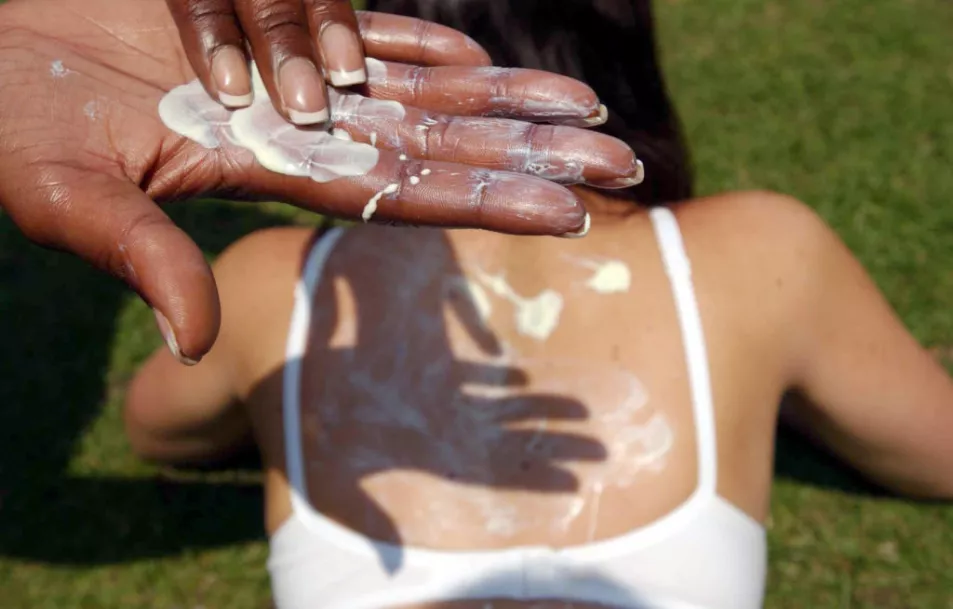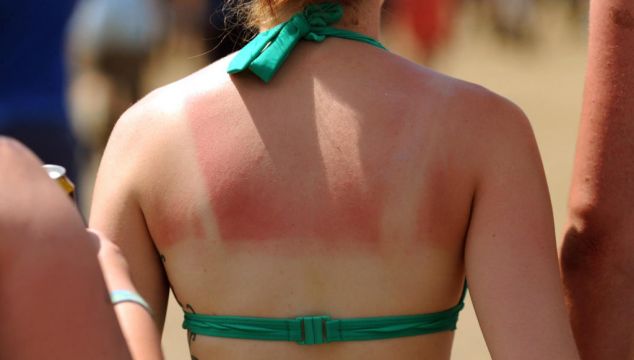When summer arrives, there’s nothing better than feeling the sun on your skin. What’s not so great is the long-term damage sun exposure can do.
Skin cancer is the most common cancer in Ireland, with over 13,000 new cases diagnosed every year. The National Cancer Registry of Ireland expects this number to double by 2040. Nine out of every 10 cases are caused by UV rays from the sun or sunbeds.
Here experts explain everything you need to know about skin protection and suncream, plus some tips for keeping you and your family sun safe this summer…
What is sun damage?
The sun emits two main types of UV rays that cause damage: UVA and UVB. “These ultraviolet rays are damaging to the skin, both the superficial and its deeper layers,” explains Dr Dawn Davis, a dermatologist from the Mayo Clinic.
UVA (long-wave) rays penetrate deeply into the skin and are associated with premature ageing, while UVB (short-wave) rays cause sunburn and a loss of skin elasticity. It’s important to protect skin from both kinds.
“Sun damage is the result of inflammation to the skin from the ultraviolet light rays,” says Dr Davis. “This damage manifests itself as redness, itching, burning and pain.”
Aside from the temporary pain of sunburn and the heightened risk of skin cancer, sun damage can cause dry spots, wrinkles, lines, changes in pigmentation such as freckles and light patches, and fragile skin to develop over time, says Dr Adam Friedmann, consultant dermatologist at The Harley Street Dermatology Clinic.
Who is at risk?
The short answer is everyone.
Dr Friedmann warns that people who burn easily, have fair hair or blue eyes tend to be the most susceptible to sun damage – with both burning and tanning signs of cellular sun damage – although that doesn’t mean those with naturally darker complexions don’t need to think about sun protection.
“Sun damage accumulates over time,” warns Dr Davis, “so the risk of bad effects such as skin cancer and photoaging (premature ageing caused by exposure to UV rays) increase with age.”
Can sun damage be treated?
There are creams that can help soothe sunburn and aesthetic signs of sun damage, but Dr Friedman says that currently, there’s no proven effective way of reversing sun damage within the skin – such as changes in the cells’ DNA or the way our immune cells detect and fight sun damage.
He believes the healthiest approach is prevention, with regular use of high-quality suncreams with a high SPF that targets both UVA and UVB rays.
“The best treatment is prevention,” agrees Dr Stefanie Williams, dermatologist medical director of Eudelo London.
So how can I prevent sun damage?
If you experience sunburn on holiday, it’s wise to stay out of the sun so you don’t make the situation worse.
“This is best practised by seeking shade, avoiding peak sunlight hours (10am to 3pm), wearing protective clothes like hats and long sleeves and, of course, suncream,” says Dr Friedmann.
He notes that suncreams with physical blockers, such as zinc oxide and titanium dioxide, are best.
“The higher the SPF, the stronger the protection against the burning UVB rays,” says Dr Friedmann. However, UVA protection is just as important, as he says UVA rays can have more long-term damaging effects.
“Always ensure you choose a sun cream with not only a high SPF, but also at least 4-star UVA rating. I recommend a factor 30, applied every two hours as a minimum. People tend to apply cream much more sparingly than the amounts used during lab testing – so an SPF 30 cream will often offer you only SPF 15 in most cases.”

Should children always wear factor 50?
Dr Friedmann says it’s particularly important that babies and children stay safe in the sun, as they can be particularly vulnerable to long-term damage – which often won’t show up until many years later.
“Wearing a high-factor SPF 50 sunscreen (with 5-star UVA protection) is imperative and babies and children with fairer skin should cover up their exposed skin when in direct sunlight,” he warns.
“Sun avoidance at peak times of the day is vital and I would recommend hats and long-sleeve swimwear for babies in the swimming pool.”
A final top tip for parents? Use visible sunscreens, says Dr Friedmann, so you can see where they have been applied. Some children’s varieties come coloured (eg blue), making it easy to see where you have put cream on and where you have missed. “As a rule of thumb, a fingertip-sized squirt should cover an area of skin the size of a hand,” he says.
Does sunscreen go off?
“Yes, and using an SPF that’s past its shelf life means it won’t protect effectively,” says Abi Cleeve, MD at Ultrasun UK and founder of SkinSense.
“Always check the small symbol on the bottle, a pot with the number of months it is effective after opening.”
She adds most suncreams have an average shelf life of six to 12 months after opening, due to the specific lamellar formula used.
Do SPF mists really give your face enough protection?
“A good quality mist sunscreen can be just as effective as a good quality cream sunscreen – provided you apply the mist in sufficient quantities,” says Laura Harker, lead screening nurse at The Mole Clinic.
To get adequate coverage, Cleeve says it takes “a little more vigilance to ensure no missed bits, so do make sure these are also rubbed in. After that full first application, a mist is also great for ‘on the go’ and top-ups over make-up”.
Do foundations that contain sunscreen work just as well?
“No, as not all foundations are broad-spectrum, which protect against UVA rays,” says Chelsey Edmunds, campaigns and communications manager at Escentual.
“This is due to the number of filters having to be less, as the pigment of the foundation needs to be more. To get the same amount of protection from a broad-spectrum SPF 30, you would need to apply 15 layers of foundation.”
Plus, there’s the issue of reapplication, Harker points out: “All sunscreens need frequent re-application to remain effective, and most people do not want to re-apply foundation frequently, so there is a greater risk of under-protection when using SPF foundation.”
Are any sunscreens really waterproof?
“Waterproof sunscreens don’t really exist. Water-resistant sunscreens do,” says Edmunds, which means they are tested to ensure up to 40 minutes of underwater resistance.
Even if you aren’t swimming, don’t forget to reapply, says Harker: “These sunscreens will need to be more frequently re-applied as exposure to water – or even sweat – quickly reduces the all-important sun protection factor.”
Are expensive sunscreens really better, or are you just paying for the brand?
When choosing a sun block, you should consider the SPF number (UVB), percentage UVA filter and the formula, says Cleeve, regardless of brand or price. “Opt for an SPF of 30 or more and a UVA percentage filter of over 90 per cent.”
Harker recommends selecting a product that has a UVA rating of four or five stars “rather than [based on] price, because the higher the price does not always mean the higher the protection”.
Beyond those important ratings, Edmunds says the price difference between sun blocks comes down to “the technology and the texture. Like many things in life, you get what you pay for. Better quality sunscreens generally have better ingredients, pleasureability and offer better protection for your skin, but you can get adequate protection from budget products.”







